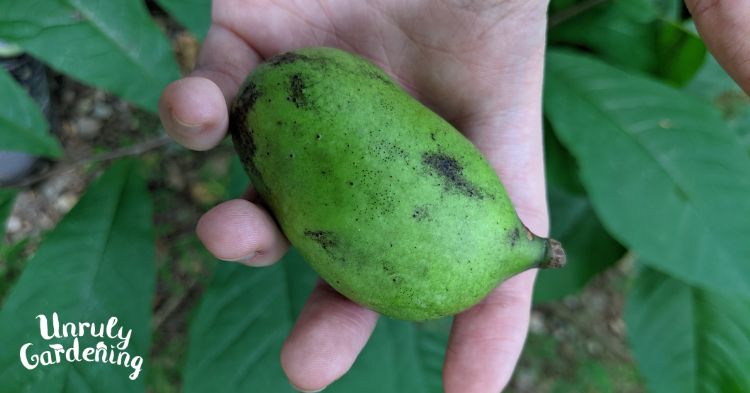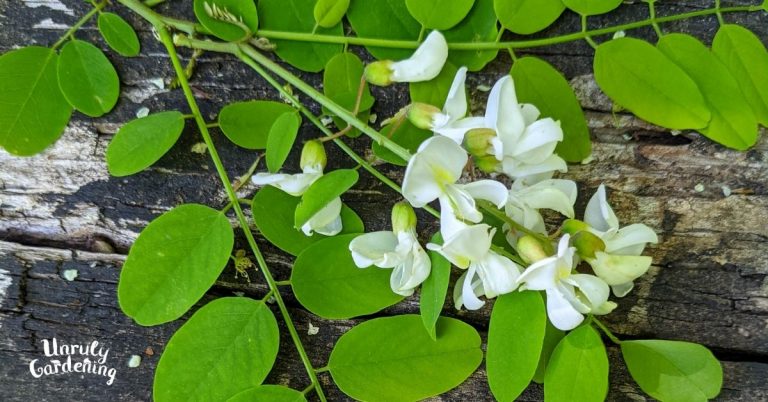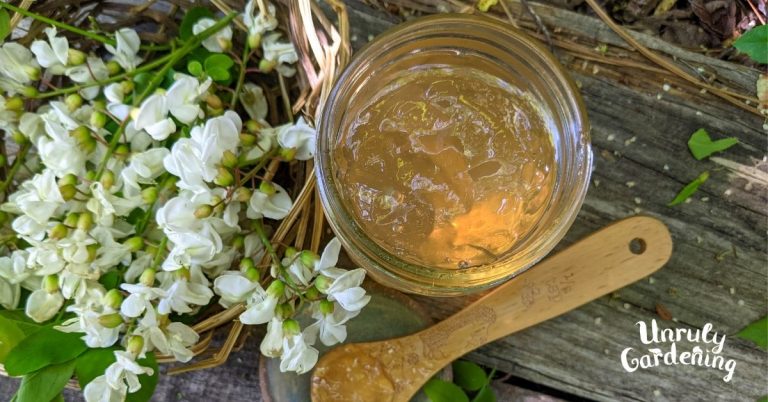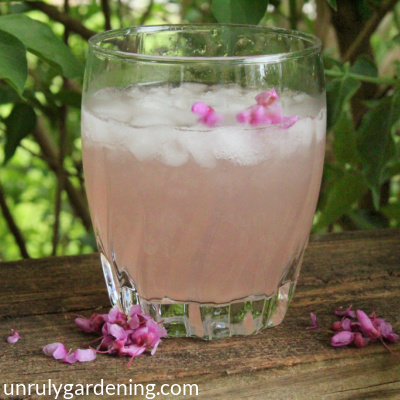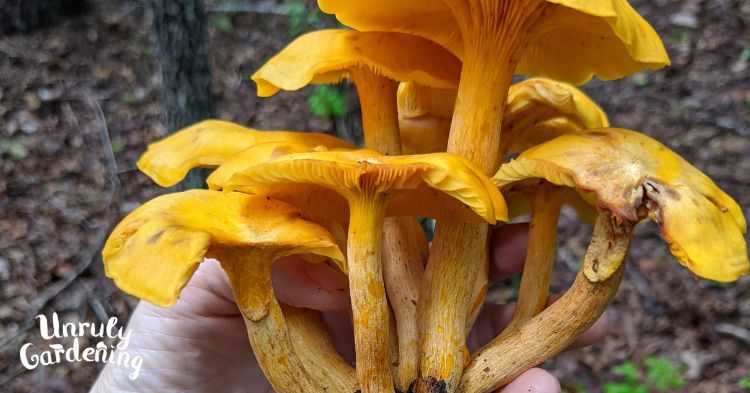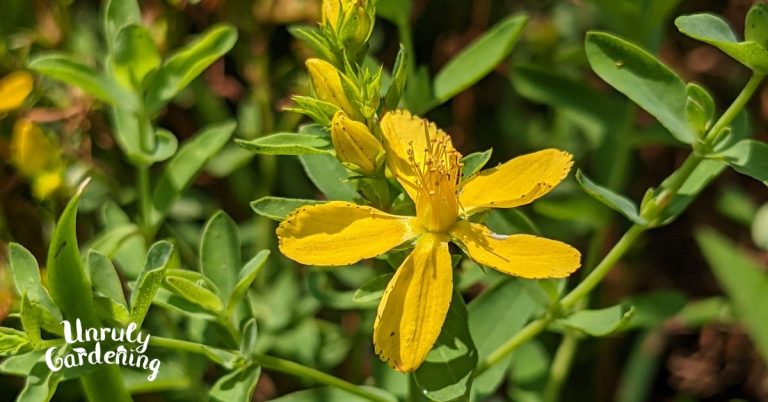Foraging Japanese Honeysuckle
Learn how to identify Japanese honeysuckle, an edible flower that can be used for tea, tincture, jelly, and more!
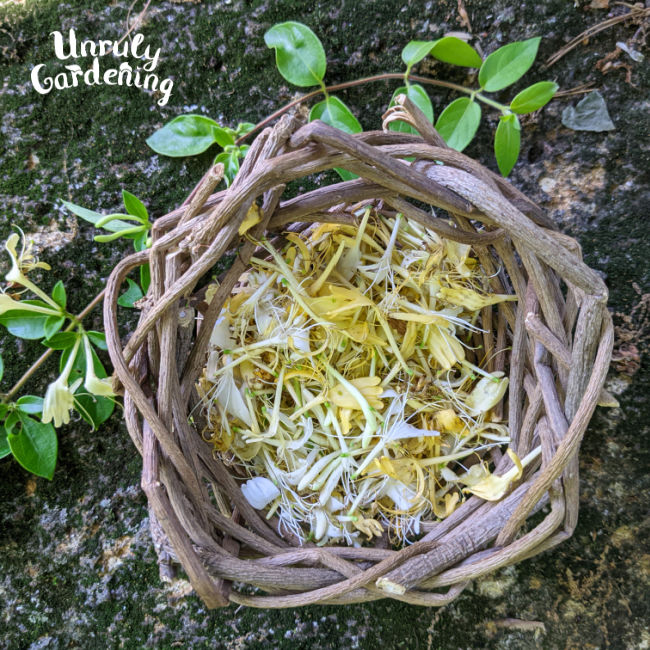
Japanese honeysuckle (Lonicera japonica) is a non-native species of honeysuckle that you’ll often find growing in the wild. The trumpet shaped edible flowers not only smell amazing, they have food and herbal medicine uses too!
Because this plant is high on the invasive plant species lists of many states in the United States, and can grow out of control, over shading valuable native plants and even causing trees to break, we do not recommend planting it, but instead foraging when possible.
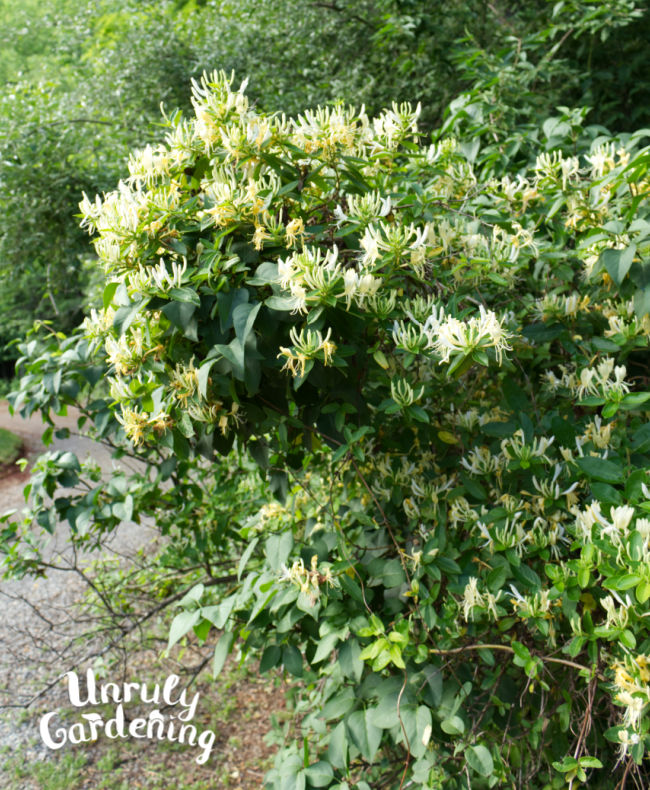
Tips to Identify Japanese Honeysuckle
There are well over 100 types of honeysuckle out there and some aren’t edible or medicinal (and many of the berries are downright toxic), which is why we stick with using the well-studied and widely available Japanese honeysuckle variety. If you’re not sure what type of honeysuckle you have, first try using the PictureThis Plant Identification phone app and see what type of plant it says you have.
Only use the app as a starting point to further research the type of honeysuckle it suggests and see if the characteristics match up. Never rely on just the app (because it’s not always right), or just one source (including this article!) to identify honeysuckle – use multiple sources to make sure of the ID. Foragers should also read “Honeysuckle Heaven”, an article over at Eat the Weeds website that talks about some of the other honeysuckle varieties.
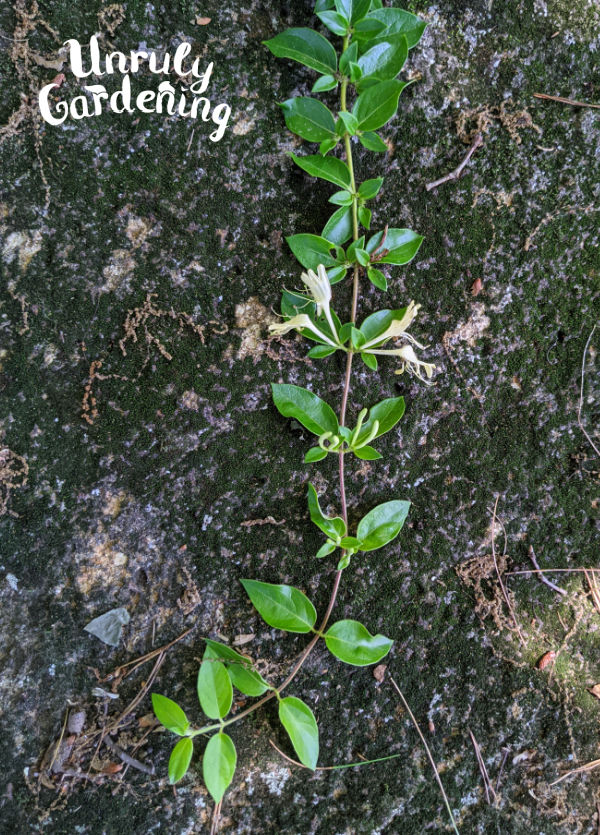
Vine & Stems
Japanese honeysuckle is a vining plant. It grows from the ground to about 30 feet (9 meters) and directly wraps itself around trees and fences. It doesn’t produce tendrils.
Because it often grows into bushes in a tightly tangled mess, you may at first think it’s part of a bush, but you should be able to unwrap and pull the vine away in one long piece, to help you identify that you’re working with a vine, not a bush.
The older parts of the vine turns woody and brown, while the younger parts of the vine feel very fuzzy from the fine hairs covering them. The young stems are red or reddish green.
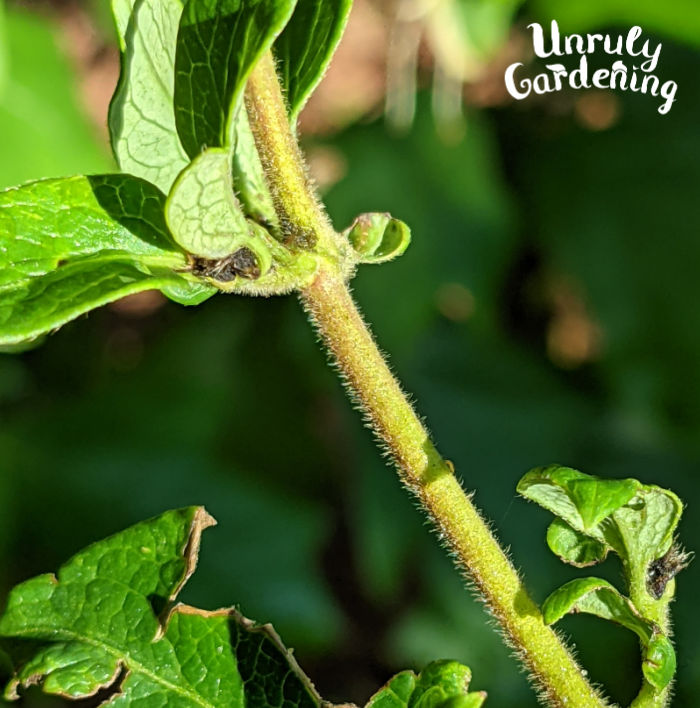
Leaves
The ovate leaves grow opposite from each other and have smooth margins with very fine hairs lining the edges – the hairs are hard to see, but try taking a photo of the leaves with your phone, then zooming way in to detect them.
Honeysuckle stays evergreen in most places, or semi-evergreen (doesn’t lose its leaves until mid-winter) in colder spots, so you can often see where the vines are growing fairly easily in cold weather.
The backs of the leaves have very fine hairs which may be hard to feel unless you have sensitive fingertips. You can try gently rubbing the back of a leaf against your lips and you should feel the slight fuzziness.
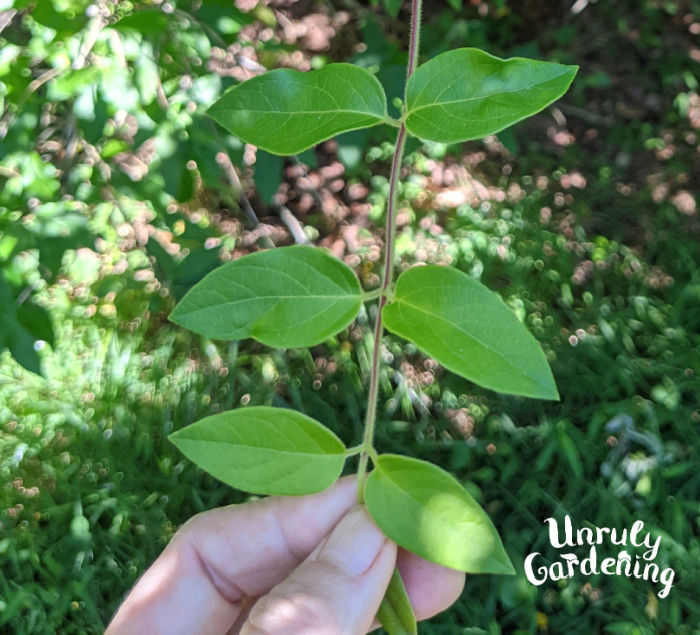
Flowers
The yellow and white flowers of Japanese honeysuckle are one to two inches long, tubular shaped, and intensely fragranced, blooming in late spring or early summer. For our area (zone 7a) they bloom at the end of May through the beginning of June.
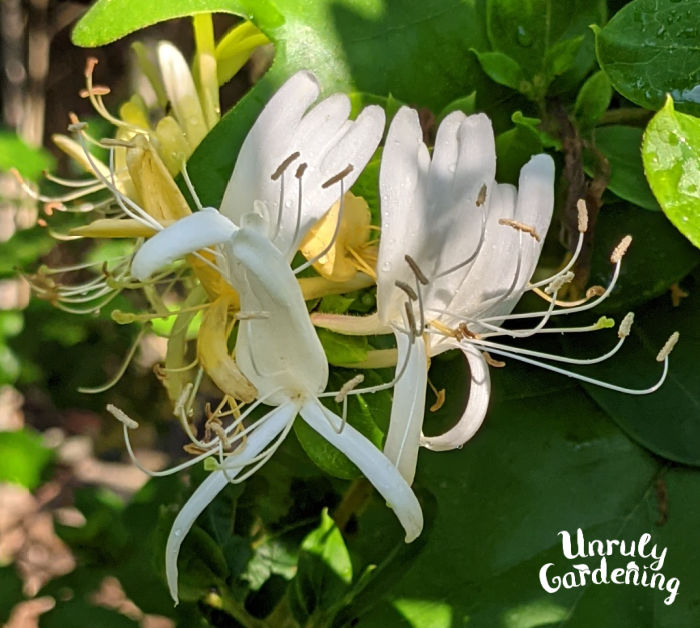
Inside the blooms is a little drop of nectar, that you likely enjoyed the taste of as a child. Insects and bees love the sweet nectar of honeysuckle blossoms too!
Honeysuckle flowers grow in pairs from the leaf axil (the place where the leaves grow from the stem). The flowers grow along the stem, not just at the tips.
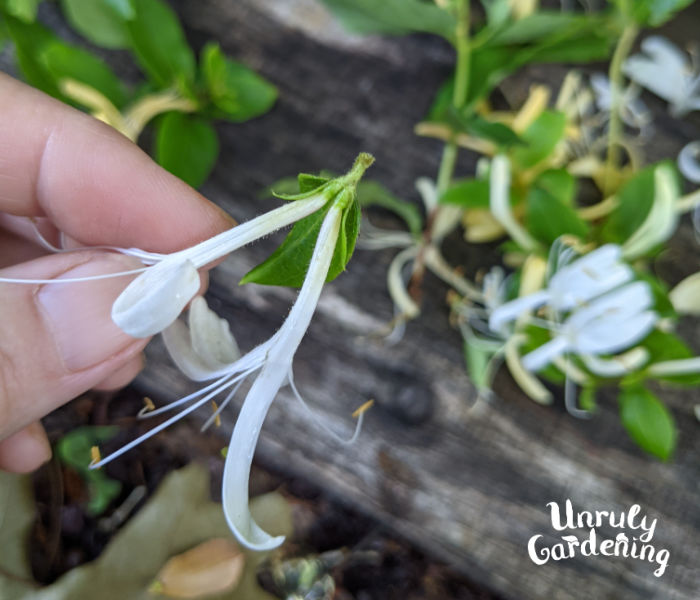
Flowers can have a tinge of pink on them, especially when young:
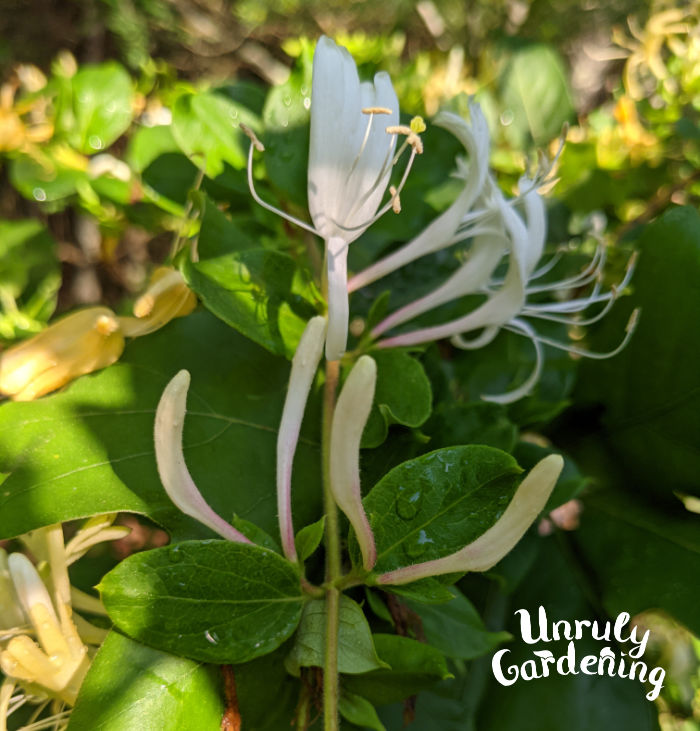
Honeysuckle Berries (Don’t eat!)
The black berries of Japanese honeysuckle (Lonicera japonica) are likely toxic. DO NOT EAT THEM.
Lookalikes for Japanese Honeysuckle
There are many varieties of honeysuckle out there, and some native species in the US are also vines. In many cases the flower is edible, but not always. Look for these key identifiers for Japanese honeysuckle (scientific name: Lonicera japonica):
- pairs of yellow and white flowers emerge from the leaf axils along the vine (and not just on the vine tips)
- vines/stems that are hairy when young; our native honeysuckle stems are smooth
Besides using multiple sources (not just this article!) to identify honeysuckle, check with local foraging groups or botanists, to be more certain of the type of honeysuckle you have available locally.
US Native Species
Two of our native species to know are Twining Honeysuckle (Lonicera dioica) and Trumpet Honeysuckle (Lonicera sempervirens).
Check out pages 22 and 23 in the PDF printable – Mistaken Identity? Invasive Plants & Their Native Lookalikes for more about these two native lookalikes of Japanese honeysuckle.
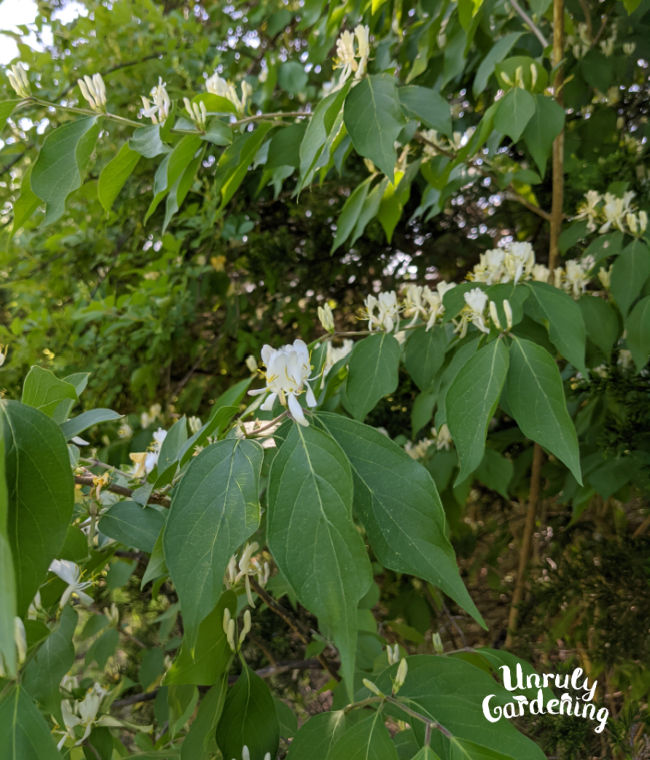
Eurasian Bush Honeysuckles
A common type of invasive honeysuckle in the US is Amur Honeysuckle (Lonicera maackii), also called bush honeysuckle – it grows as shrubs that aggressively choke out native vegetation at the edges of fields and forests.
Amur honeysuckle produces flowers earlier in the year than Japanese honeysuckle and it’s a shrub, not a vine. While some people do use the flowers of Amur honeysuckle for food purposes, we do not. We prefer using Japanese honeysuckle blossoms for food and medicine, since it’s been extensively studied for its medicinal uses and safety.
Invasive bush honeysuckles are detrimental to wildlife – studies have shown that areas where they grow have a higher amount of disease bearing ticks. The berries produced offer subpar nutrition as wildlife forage (basically junk food for wildlife), and birds that nest in invasive honeysuckle bushes are more likely to succumb to predators. In short, if you have any in your landscape, it’s highly recommended to destroy or control by chainsaw and weed eater – or our favorite method of invasive control – goats!
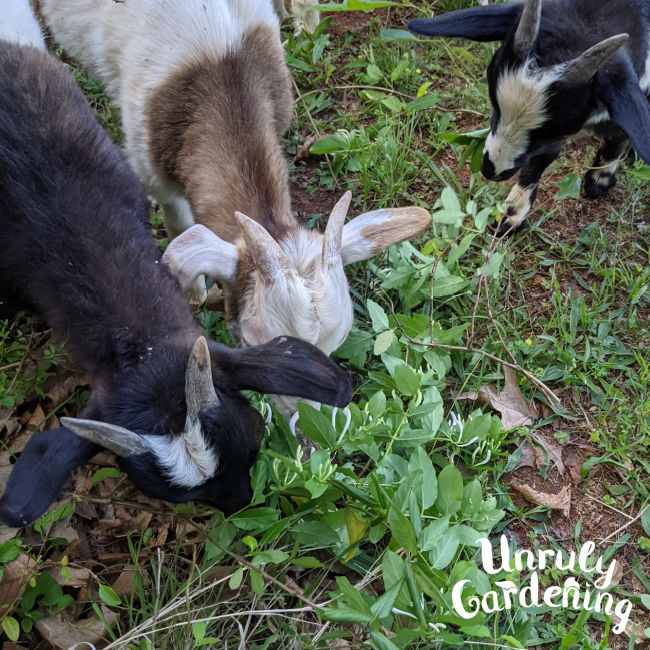
European Honeysuckle (Lonicera periclymenum)
Also called woodbine, it grows throughout Europe in hedgerows and woodlands. You can read more about Lonicera periclymenum at the North Caroline Extension site.
Next: Use Your Honeysuckle!
Now that you’ve collected some honeysuckle, hop over to our next article
6 Uses for Honeysuckle Flowers
References & Further Reading
Allan, Bryan F. Invasive honeysuckle eradication reduces tick-borne disease risk by altering host dynamics. Proceedings of the National Academy of Science U.S.A. 2010 Oct 26; 107(43): 18523–18527.
Chevallier, Andrew. Encyclopedia of Herbal Medicine. 2016. Penguin Random House, New York, NY.
Du, Xu-Qin, et al. Add-On Effect of Honeysuckle in the Treatment of Cor.ona.virus Disease 2019: A Systematic Review and Meta-Analysis. Frontiers in Pharmacology. 15 September 2021 doi: 10.3389/fphar.2021.708636
Li, Mengwei, et al. Inhibitory Activity of Honeysuckle Extracts against Influenza A Virus In Vitro and In Vivo. Virologica Sinica. 2021 Jun;36(3):490-500. doi: 10.1007/s12250-020-00302-6. Epub 2020 Oct 12.
Scott, Timothy Lee. Invasive Plant Medicine. 2010. Healing Arts Press, Rochester, VT.
USDA. An Assessment of Japanese Honeysuckle in Northern U.S. Forests; Research Note NRS-202. Online PDF accessed June, 2022.
Our articles are for information and idea-sharing only. While we aim for 100% accuracy, it is solely up to the reader to provide proper identification. Be sure to seek out local foraging classes and plant walks, and invest in mushroom and foraging guides suitable for the area you live in, since some wild foods are poisonous, or may have adverse effect.

